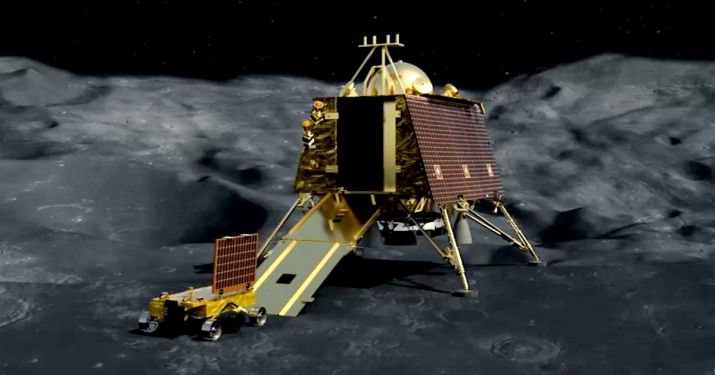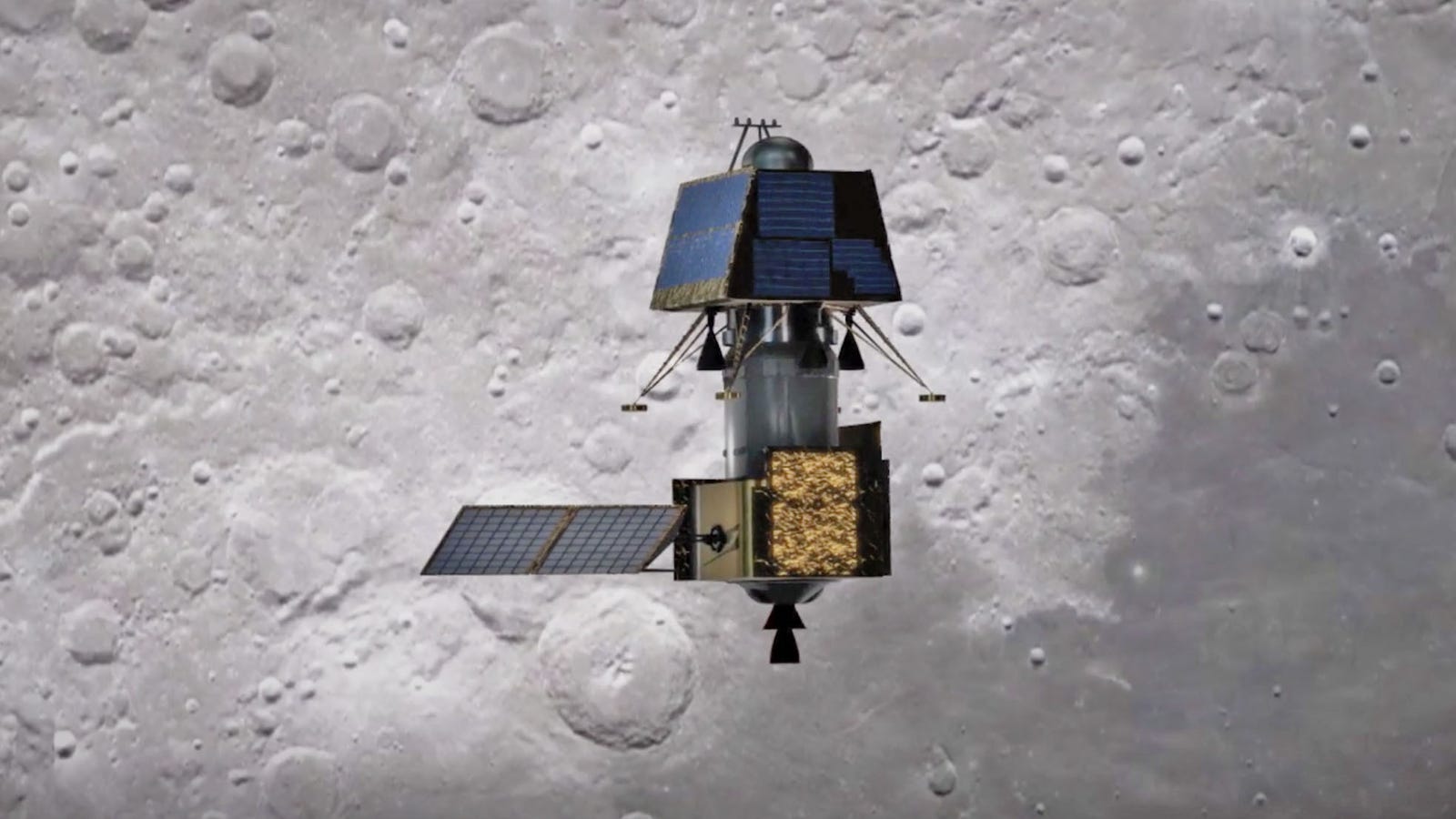Chandrayaan 3 Nears the Moon: Unraveling the Roles of Vikram Lander and Pragyan Rover
Chandrayaan-3 is a highly anticipated lunar mission led by the Indian Space Research Organisation (ISRO). It is the follow-up mission to Chandrayaan-2, which was launched in 2019 with the goal of achieving a soft landing on the Moon’s surface. Unfortunately, Chandrayaan-2 encountered a setback and was not able to achieve the intended soft landing.
The main objective of Chandrayaan-3 is to successfully achieve a soft landing on the Moon and further explore the lunar surface. To achieve this goal, the spacecraft completed orbits around the Earth and has now moved closer to the Moon on its trajectory.
A soft landing on the Moon would be a significant achievement for India’s space program and would pave the way for further exploration and scientific research on the lunar surface. It would also enhance India’s capabilities in space exploration and establish the country as a key player in the global space community.
Chandrayaan-3, the ambitious lunar mission led by the Indian Space Research Organisation (ISRO), has completed its orbits around the Earth and is now progressing closer to the Moon. This high-profile project aims to achieve a soft landing on the lunar surface, following the Chandrayaan-2 mission in 2019, which unfortunately did not accomplish the desired soft landing. Comprising an indigenous propulsion module, a lander module, and a rover, Chandrayaan-3 is designed to develop and demonstrate advanced technologies essential for future interplanetary missions.

The primary role of the propulsion module in Chandrayaan-3 is to transport the lander module from the launch vehicle injection orbit to the lunar orbit, ensuring a smooth journey for the spacecraft. Once the lander and rover reach the Moon’s orbit, the propulsion module will remain there, acting as a vital communication link between the spacecraft and Earth-based ground stations. This will facilitate seamless data transmission, enabling the scientific payloads onboard the rover to carry out experiments and collect valuable data during its operational phase on the lunar surface.
The specific mission plan of Chandrayaan-3 involves positioning the lander module and rover in a lunar orbit approximately 100 kilometers above the Moon’s surface. Upon reaching this orbit, the lander module will separate from the propulsion module and proceed with its critical descent to the lunar surface to achieve a successful soft landing. Once on the Moon, the rover will embark on its scientific mission, conducting experiments and observations for a period of 3 to 6 months. The successful execution of Chandrayaan-3 will significantly enhance India’s capabilities in space exploration and pave the way for future interplanetary endeavors.
Role of Vikram Lander:
The lander of Chandrayaan-3 is named after Dr. Vikram A Sarabhai, the visionary scientist and founding father of the Indian Space Programme. It is equipped with advanced sensors to ensure a safe landing on the lunar surface and is designed to operate for one lunar day, which is equivalent to approximately 14 Earth days. The lander, along with the rover, has a total weight of about 1,749 kg. It is equipped with side-mounted solar panels capable of generating 738 W of power and will be primarily focused on exploring the lunar south pole.
The Vikram lander carries three important payloads to fulfill its scientific objectives. The first one is RAMBHA-LP, which is designed to measure the density of near-surface plasma (ions and electrons) and monitor its variations over time. The second payload, known as ChaSTE (Chandra’s Surface Thermophysical Experiment), will conduct measurements of the thermal properties of the lunar surface near the polar region. Finally, the third payload, ILSA (Instrument for Lunar Seismic Activity), is specifically designed to detect and analyze seismic activity in the vicinity of the landing site, providing valuable insights into the structure of the lunar crust and mantle.

With its advanced instruments and scientific capabilities, the Vikram lander is expected to significantly contribute to our understanding of the lunar surface and its geological processes. The successful functioning of these payloads will further enhance India’s position in space exploration and pave the way for future lunar missions with more sophisticated objectives.
Role of Pragyan Rover:
The robotic vehicle accompanying the Vikram lander in Chandrayaan-3 is aptly named ‘Pragyan,’ which translates to ‘wisdom’ in Sanskrit. Pragyan is a sophisticated six-wheeled rover equipped with a variety of instruments and payloads designed to gather crucial data about the lunar surface. One of its primary objectives is to study the elemental composition of the Moon’s surface, providing valuable insights into its geological and chemical characteristics. The rover weighs around 26 kgs and, like the lander, is designed to operate for one lunar day, which is approximately 14 Earth days.
Pragyan’s scientific capabilities will play a crucial role in enhancing our understanding of the Moon’s surface and its geological processes. With its advanced instrumentation and mobility, the rover will traverse the lunar terrain, conducting experiments and collecting data to shed light on various aspects of the Moon’s surface. The data collected by Pragyan will be transmitted back to Earth and analyzed by scientists and researchers to further unravel the mysteries of our celestial neighbor.
The Pragyan rover on board Chandrayaan-3 carries two essential payloads to conduct scientific experiments on the lunar surface. The first payload, APXS (Alpha Particle X-Ray Spectrometer), is tasked with analyzing the elemental composition of the lunar soil and rocks. By detecting and measuring the emissions of alpha particles and X-rays, this instrument will provide crucial data about the presence and abundance of various elements on the Moon’s surface.

The second payload on the rover is LIBS (Laser Induced Breakdown Spectroscope). This instrument utilizes laser pulses to create a plasma on the lunar surface, allowing it to analyze the emitted light and determine the elemental composition of chemicals such as magnesium and aluminum in the lunar soil and rocks near the landing site.
With these advanced scientific instruments, the Pragyan rover will conduct thorough analyses of the lunar surface, contributing valuable information to our understanding of the Moon’s composition and geological processes. The data collected by these payloads will be instrumental in advancing lunar research and may even offer insights into the Moon’s history and evolution.
Chandrayaan-3, launched from Earth on July 14, is set to reach the Moon and attempt a soft landing on August 23. The mission marks India’s continued efforts to explore the Moon and conduct cutting-edge scientific experiments, further solidifying its position in the global space community. The successful landing and deployment of the Pragyan rover will be a significant milestone in India’s space journey and a moment of pride for the nation.



